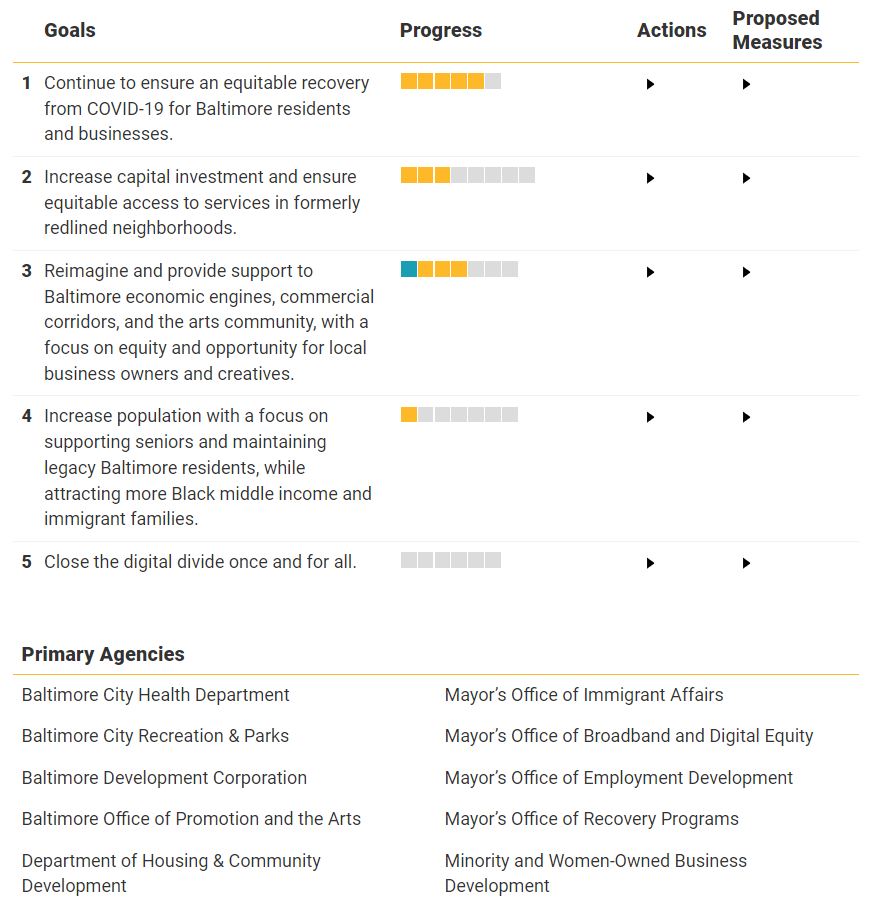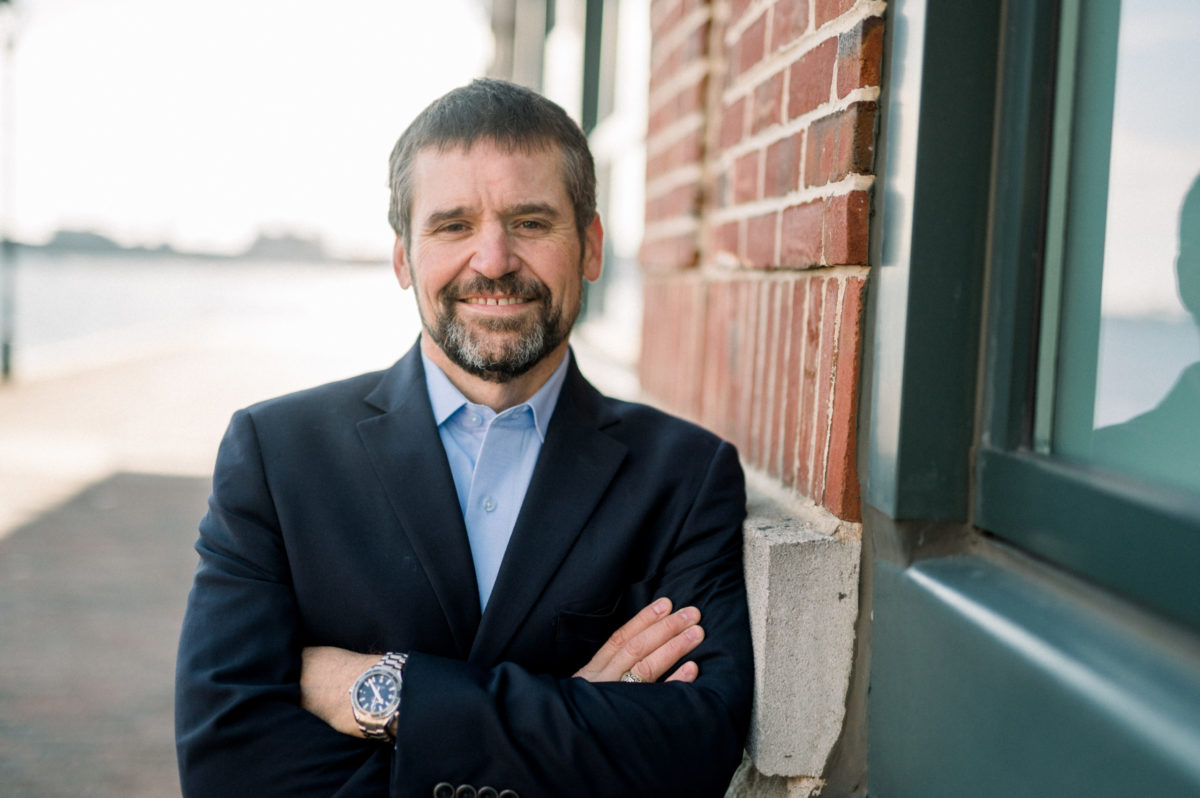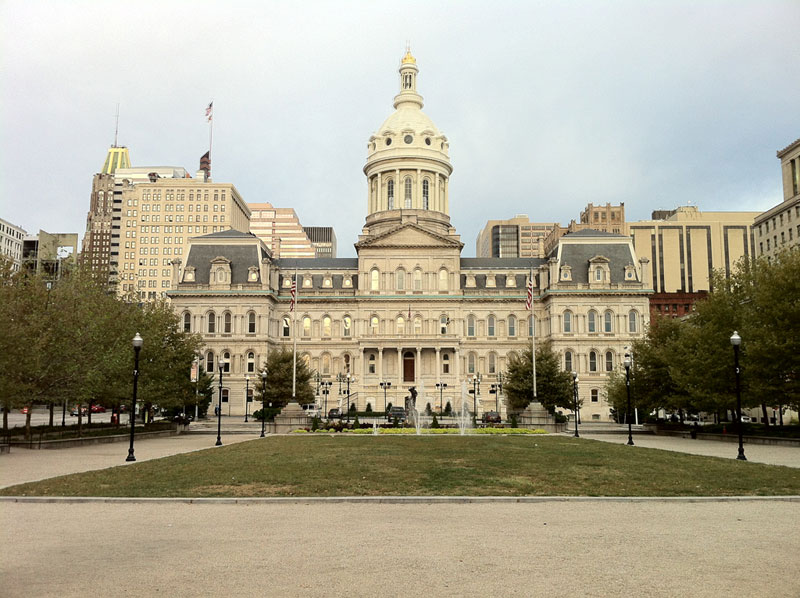In March of 2021, Mayor Brandon Scott announced Jason Hardebeck as the director of the newly-created Mayor’s Office of Broadband and Digital Equity. The appointment and office’s creation were seen as major steps forward, as well as proof of the city’s commitment to closing the digital divide. A year and a few months later, as part of our third Racial Equity in Tech Month, we circled back to ask community stakeholders — and Hardebeck himself — how much progress the office has made.
Technical.ly chatted with Hardebeck multiple times about his vision for the office through the first 100 days of his tenure. We did a Q&A during his first month, in which he outlined goals like publishing Baltimore’s broadband and digital equity plan by summer (it was released in the fall) and making inroads with nonprofits and companies of all sizes to close the digital divide. He described how this stint with city government was different from 2015, when he served under then-Mayor Stephanie Rawlings-Blake as broadband coordinator: This time, he had a budget and the ability to effect change.
We spoke again five months later, addressing the future of broadband and digital equity in Baltimore. He explained what makes Baltimore uniquely equipped to tackle the gap in digital access and how he thinks the city can become a major player in the digital economy.
This time, Hardebeck looked back on the office’s progress after 15 months. Community stakeholders also told Technical.ly how they felt about the office both when it was announced and in the present.
Where’s the progress?
Of the stakeholders I contacted — including representatives of Baltimore Tracks, Harbor Link, RowdyOrb.it and UpSurge Baltimore — Andrew Coy, the Digital Harbor Foundation’s executive director, had the harshest criticism. Coy said that the office hasn’t made nearly enough progress despite the excitement around its establishment.
“While I am inherently optimistic and positive by nature, it is, unfortunately, undeniable that to date, the Office of Broadband and Digital Equity has not added momentum, resources or scale into the work of bridging the digital divide in Baltimore,” Coy said. “Of the 28 different sections tracked by Mayor Scott’s First Term Action Plan: ‘Building a Better Baltimore,’ the only section that has no items in either ‘In Progress’ or ‘Completed’ is closing the digital divide. I know the community desperately wants to see tangible progress here on tackling the digital divide, and we are standing ready to collaborate with the city. The city has not, however, made tangible progress in collaborating with the community. I hope that changes, and have hope it can and will change soon.”

Most of the detractors’ frustrations boiled down to a lack of progress, transparency and collaboration from the office — which they all hope changes in the future.
“Progress drives partnerships,” said Jamie McDonald, CEO of UpSurge Baltimore. “In a year, I hope that there will be several visible examples of progress so that the community and the city stakeholders believe that we can achieve these ambitious goals, and more partners engage in driving the work forward.”
From Hardebeck’s perspective, the office has been in “stealth mode,” and the promise of the significant initiatives announced are on the way.
One such initiative is a $5 million digital equity fund to distribute American Rescue Plan Act (ARPA) grants coming next month. The goal is for this money to be a seed fund for community-driven digital equity projects.
“I’m very familiar with the criticisms and concerns. And I’m sympathetic to them too,” Hardebeck said.
The digital equity fund presents Hardebeck with an opportunity to meaningfully partner with organizations in the city, but he doesn’t want that to be the primary solution. In his mind, much of what passes for collaboration often looks like the city writing checks and funding programs. Hardebeck doesn’t believe that throwing money at the problem is the answer. Instead, he wants to understand the needs and support long-term solutions.
“It’s the same argument around gun violence and other systemic issues. It’s like, throw more cops at it,” Hardebeck said. “You have to attack the underlying deficiencies, the structural deficiencies. We invented redlining in the city, right? You’re not going to fix these generational issues in a year or two. Fundamental change that’s going to last and matter takes time.”
Keeping the faith
Those who support what the office has achieved so far share a similar sentiment to Hardebeck and believe it takes time to enact change in this new position.
“Jason has been in this position before and comprehends the landscape,” RowdyOrb.it CEO Jonathan Moore said. “The office has a Herculean task to unravel and make sense of the broadband infrastructure and legalities.”
Felix Dialoiso, founding partner and chief strategy officer of broadband infrastructure company Harbor Link, shared similar sentiments.
“With any project of this caliber, there are always going to be learning curves,” Dialoiso said. “While I’m sure many would like to see the timetable accelerated, there have been many challenges that the office has had to deal with, including supply chain challenges. The office has done well developing a strategic plan for the future while dealing with immediate challenges.”

Hardebeck cites a change in political will toward closing the digital divide as a sign of hope. From the top down, the city considers internet access as critical public infrastructure — but that doesn’t mean the city is trying to compete with major ISPs like Comcast.
“What has fundamentally changed, not just in Baltimore but a lot of places, is recognizing access needs to be treated as public infrastructure — like roads, like water. There aren’t quick, easy, fast solutions to that,” Hardebeck said.
The long-term solution Hardebeck seeks is to expand the city’s public fiber network. In his estimation, it can service 350,000 addresses in Baltimore. That’s what he’s investing the initial ARPA funds in, with hopefully more funding from the state down the road.
“I wish everything moved faster as well,” Hardebeck admitted. “But we’re committed to doing this right. And we’re putting the pieces in place to do that.”
Hardebeck added that he welcomes feedback and discussions, which he didn’t get much of.
“I said that in the digital equity framework,” he said. “I invited feedback, comments and responses. I’ll be honest with you: I think I got maybe two responses back. So, you know, if somebody has questions concerns, ideas, I’d love to hear it.”
Hardebeck’s concrete goals for the next year are to:
- Connecting the majority of the roughly 23 rec centers not yet on the city’s network to that network
- Building out fiber to 13 senior centers
- Distributing $2-3 million in grants from the digital equity fund within the next year
- Bringing the Office of Broadband and Digital Equity’s staff headcount to seven or eight. (Currently at zero, as of our interview two weeks ago)
- Install 50 to 60 active WiFi hotspots across the city, with most starting in West Baltimore
- Provide internet, via an open access network model, in at least one public housing facility







